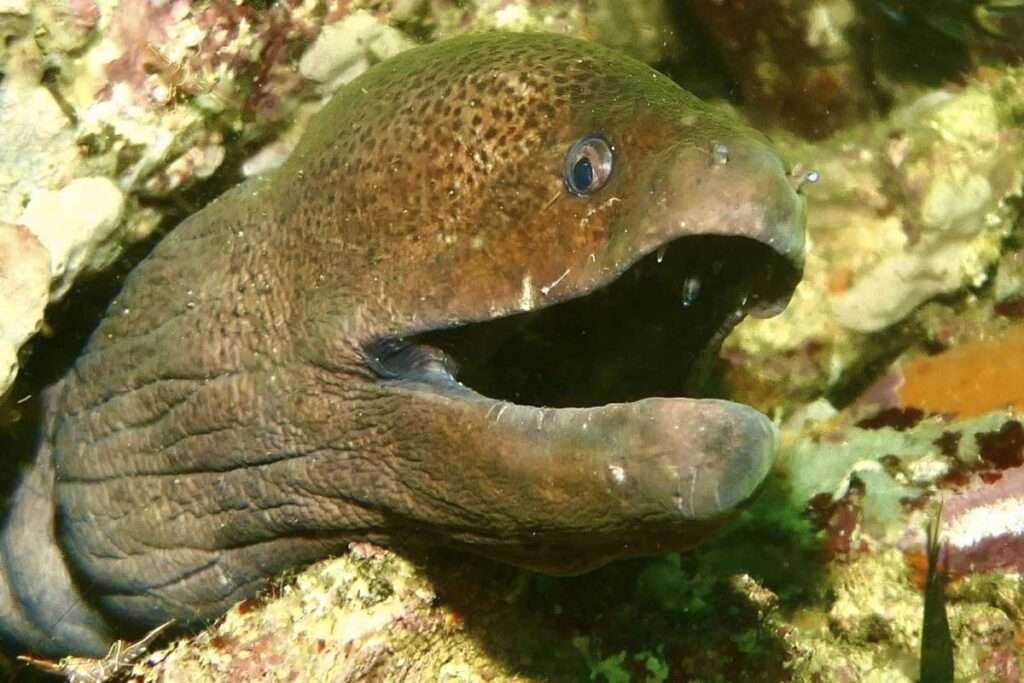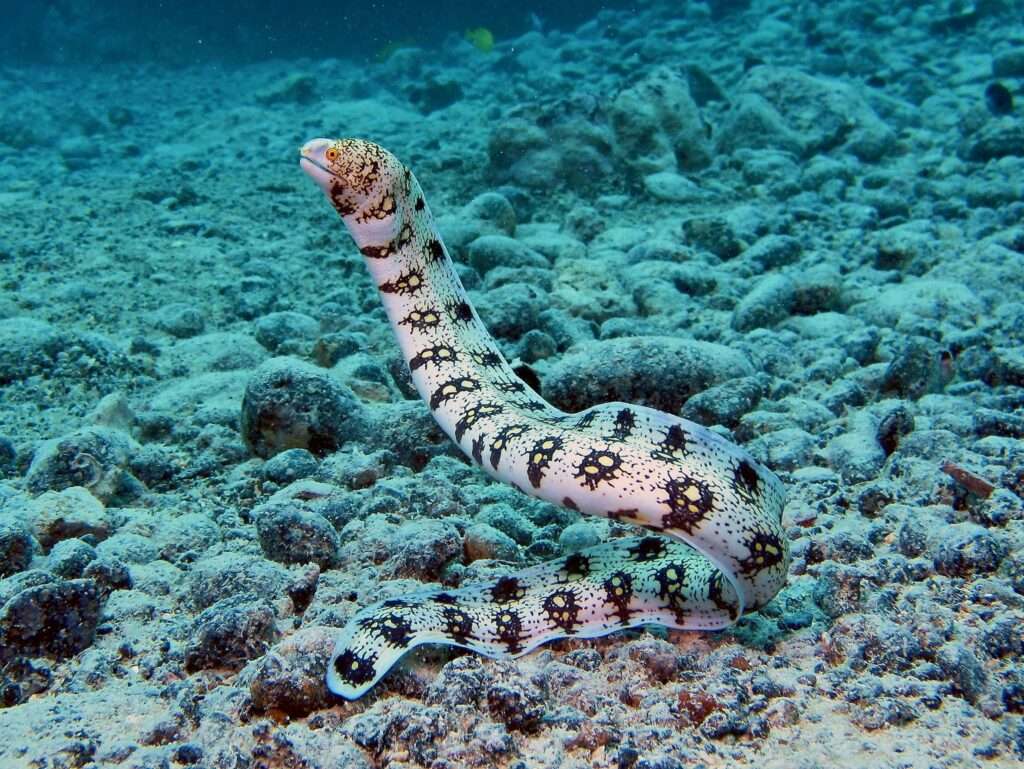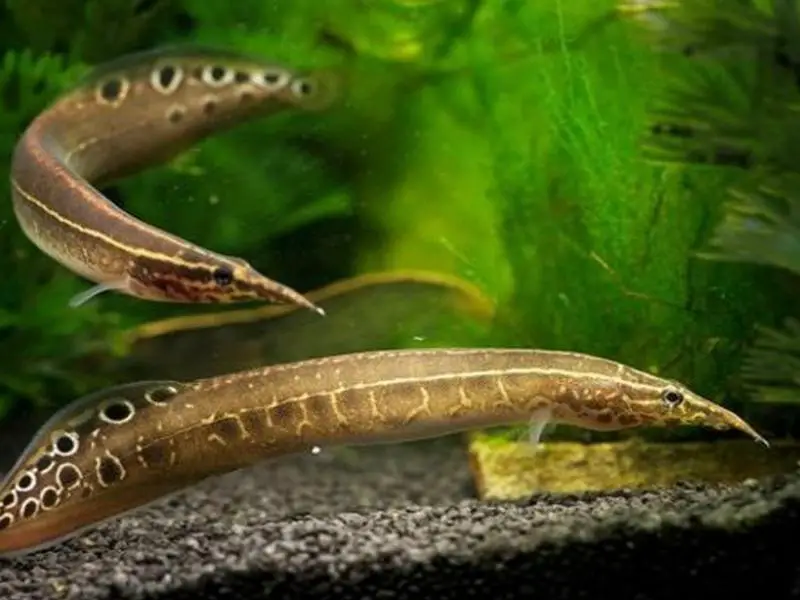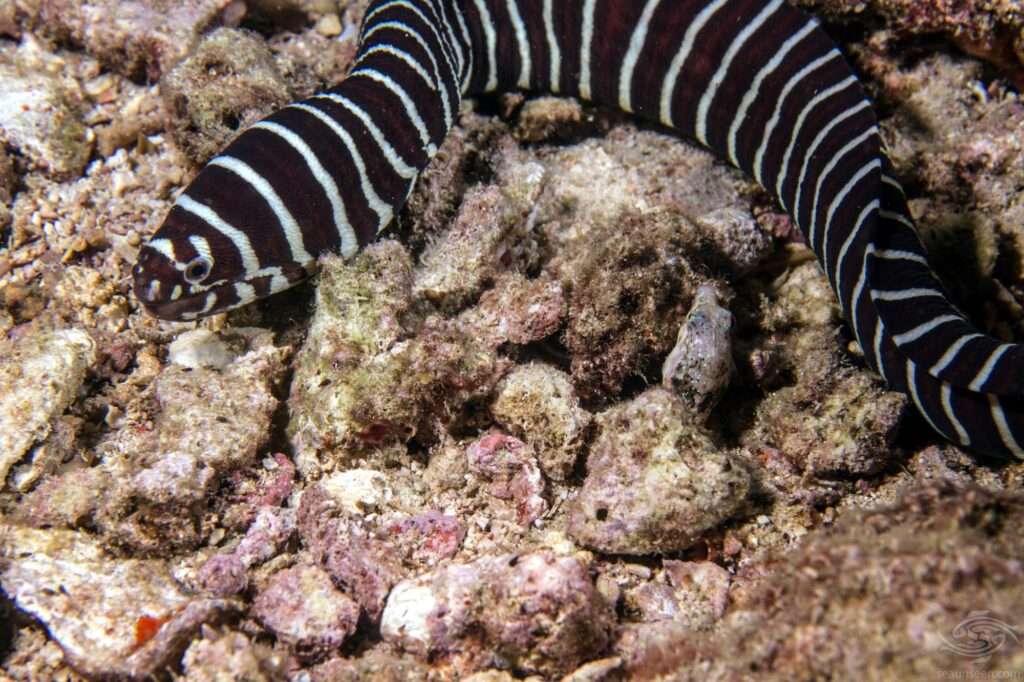
The Giant Moray Eel, which can grow to a length of 10 feet or more, is one of the biggest coral reef predators. All morays are excellent predators, despite the fact that many of the 200+ species are much smaller than this. Morays have a reputation for working with other fish species to hunt prey. The two creatures have even perfected a head-nod signal for when the hunt is about to begin. Morays also exhibit a stunning variety of colors and patterns.
The enormous moray hunts its victim within the reef at night and consumes meat. It has a reputation for cooperating in hunting with roaming coral groupers (Plectropomus pessuliferus). These two fish species hunt cooperatively: The grouper will consume the prey that the eel chases up and out of the reef as it hunts there. A species of marine fish and moray eel belonging to the family Muraenidae are together known as the huge moray (Gymnothorax javanicus). It is the largest moray eel in terms of body mass, although the slender giant moray is the biggest in terms of body length.
Description
The enormous moray, as its name suggests, is a big eel that may grow up to 3 meters long and weigh 30 kilograms. It has an extended, brownish body. Adults have black spots that progress into leopard-like patches behind the head, in contrast to adolescents who are tan in hue with huge black spots.
Habitat
The Indo-Pacific region is home to a large population of giant morays, which may be found from the eastern coast of Africa, including the Red Sea, to the Pitcairn group, Hawaiian islands, and Polynesia. From the north to the south, Japan, New Caledonia, Fiji, and the Austral Islands are reached. It resides in lagoons and on coral reefs’ outer slopes. It rests in caves that are between one and fifty meters deep during the day.
As Pet

Food
Fish and occasionally crustaceans are the main sources of food for the big moray. Recent research has revealed that this moray eel is the lionfish’s primary natural predator in the Red Sea.
Predators
A mature big moray has few natural predators, though it might face competition from sharks that live in reefs for food. It frequently has cleaner wrasses around to clean the inside of its mouth.
Hazards
People may be at risk from this species. It has been reported that because it is at the top of the food chain, dangerous ciguatera toxins can demonstrate biomagnification. Thus, eating a big moray can result in illness, a coma, or even death, especially if the liver is consumed. This moray is not typically aggressive, but it has been known to bite when threatened, cornered, or in the presence of food.
Table





